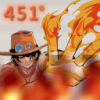 [Edited by - Fahrenheit451 on January 7, 2006 11:38:48 AM]
[Edited by - Fahrenheit451 on January 7, 2006 11:38:48 AM]
Blockyness on procedural texturing
Hi everyone. I am experiencing some blockyness with my terrain at certain points on the heightmap. Most noticeable place is the sand to water transition, as in the following screenshot. I am using the examples in the Trent Polack book (great little book) for generating this. Seems texture type also has an effect on how noticeable this is, but I am trying to get a water->beach->grass transition and this seems to be most blocky. Also seems the acuteness of the angle of the poly makes a difference. The sharper the angle or change of height between two points the more pronounced the difference between the textures. Any ideas on how to get better 'blending' of textures using the tiles/regions method from the book - assuming you've seen the method in the book that is :)
 [Edited by - Fahrenheit451 on January 7, 2006 11:38:48 AM]
[Edited by - Fahrenheit451 on January 7, 2006 11:38:48 AM]
 [Edited by - Fahrenheit451 on January 7, 2006 11:38:48 AM]
[Edited by - Fahrenheit451 on January 7, 2006 11:38:48 AM]
I'm not familiar with the book's method, but from eyeballing the screenshot it looks like you're assigning incorrect textures on some of the seams. I would suggest having "seam" polygons split into triangles instead of quads; texture each triangle according to the nearby terrain texture. This should produce a continuous, smooth line without having to get into multitexturing or anything like that.
If you feel adventurous, you could set up the seam polys so that the vertices in one region have that region's textures, and the opposite vertices use textures from the other region. This may require some mathematical trickery, and the actual method for rendering the blended textures depends largely on the API you use.
If you feel adventurous, you could set up the seam polys so that the vertices in one region have that region's textures, and the opposite vertices use textures from the other region. This may require some mathematical trickery, and the actual method for rendering the blended textures depends largely on the API you use.
How are you blending texture stages? Using alpha? One value per quad? If so you should use 1 value per quad corner and enable smoothing on the quad.
This topic is closed to new replies.
Advertisement
Popular Topics
Advertisement






